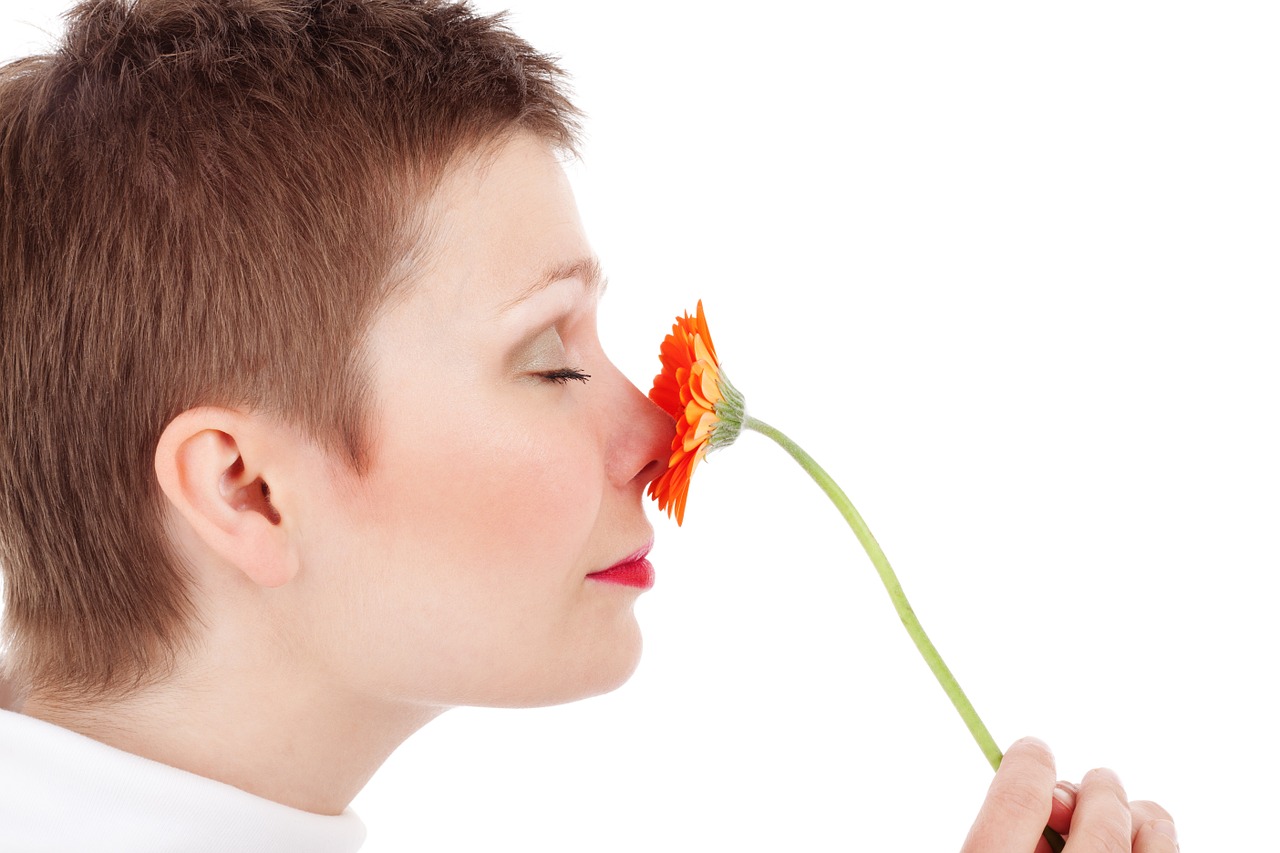Cosmetics & Personal Care
Aromatic herbs and health: Our evolutionary pharmacy 21st August 2018
By Dr Mark Moss, Head of Department of Psychology at Northumbria University
Dr Mark Moss, Head of Department of Psychology at Northumbria University, discusses some of the effects that aromas can have

Dr Mark Moss, Head of Department of Psychology at Northumbria University, discusses some of the effects that aromas can have on aspects of human health and cognition.
Our sense of smell is typically undervalued in modern society, with vision and hearing gaining the greatest attention. Yet, in evolutionary terms, olfaction is probably the original sensory mechanism – a complex chemodetection system facilitating the identification of food, potential mating partners, dangers and predators. It is without doubt that evolution has led to a reduction in the power of our sense of smell, and it appears that this occurred in tandem with the acquisition of full trichromatic colour vision.1 Nonetheless, it is estimated that we still possess 350 functional genes for olfactory receptors, and recent research suggests that rather than the old proposal that we can distinguish between 10,000 different aromas the average individual has the power to differentiate many millions.2 Although it seems unlikely that we would ever have a need to exploit such extreme sensitivity in smell, there are clear benefits to be accrued from olfaction, and these may go beyond the avoidance of ‘off’ food and the attraction of a mate.
The use of plant essential oils and aromas in cultural and medicinal practices dates back to at least 3000 BC with evidence found in Egypt, India and China.3 What is particularly interesting is that as written records began, and specific plants were catalogued for different applications, a (presumably) coincidental consensus prevailed. Herbalists and medicinal practitioners working in geographically distant locations would apply the same or similar plants, extracts and their aromas for comparable purposes. It is without question that the selection of plants did not derive from systematic research. Nor is it likely that pure trial and error learning by practitioners produced the wisdom of ages that constitutes ancient pharmacopeia. It does however seem plausible that evolutionary experience produced something of a hardwired recognition of the aromatic properties of plants that might provide benefits for health and wellbeing. It is these that then become established in use, as well as in folklore and early scientific writing.
In recent years there has been an increase in the level of interest from psychopharmacologists in herbs, extracts and aromas. The beginnings of more systematic research into these has seen a number provide interesting data. Sage (Salvia L) is the largest genus of the family Labiatae, including over 900 species worldwide historically used for the treatment of diabetes, infections4 and “weak brains”.5 Contemporary research has focussed on Salvia officinalis and Salvia lavandulaefolia with oral administration improving aspects of memory, attention and mood in healthy young and elderly volunteers.6,7 Interestingly, the effects of exposure to the aromas of these species also produce effects on these measures. In a study employing 135 healthy volunteers, small improvements were found for the aromas of Salvia sp on the accuracy of long term memory and the speed of attentional processing.8 Participants in both aroma conditions also reported feeling more ‘alert’ than those in the no aroma control condition.
Peppermint (Mentha pipperita) is also a member of the Labiatae family, but one with a distinct aroma as a consequence of the presence of menthone and menthol – compounds that provide its ‘uplifiting’ and ‘invigorating’ properties. Historically, peppermint has been applied orally for gastrointestinal pain, and as an aroma to ease respiratory congestion, as well as for its subjective effects. In vitro studies demonstrate peppermint’s properties as an antioxidant, anti-inflammatory and an antitumor agent.9 Human studies have also demonstrated that peppermint can improve sport and exercise performance and also reduce anxiety.10,11 With regard to cognition peppermint aroma has been shown to improve sustained attention,12 and in a study employing the Cognitive Drug Research computerised assessment system, forty-eight participants exposed to peppermint aroma showed improved memory performance compared to no aroma controls. They also reported being more alert at the end of the testing procedure.13 In the same study the comparative aroma of ylang ylang was also employed. Ylang ylang (Cananga odorata Annonaceae) is a tropical tree native to Indonesia, Malaysia, and the Philippines. The aroma derived from the flowers is widely used as a relaxant, and to increase sexual desire. Medicinally, it has been used as an antidepressant and to reduce blood pressure.14 In the study reported here, a significant calming effect was found over the time course of the study, and this was associated with a slowing of reaction times and impaired memory performance.
The identification of idiosyncratic effects of the aromas of essential oils on aspects of human health and cognition might not be surprising to those working in the fields of fragrance or even pharmacology. The possible mechanisms have been investigated to some extent, with the recording of plasma-borne active constituents that correlate with behavioural measures following exposure to aromas.15,16 These pharmacological effects may serve as an adjunct to the psychological impact of the aromas themselves. But to return the question of how we developed our use and identification of therapeutic plants and aromas before the use of written documentation leads us to an interesting possibility. It may have been evolutionarily advantageous to recognise plants by their aromas, at a time before our visual acuity had fully evolved. Such an advantage may then have become ‘hard wired’ in our evolving brains, leading to the widespread usage that may be as beneficial for health and wellbeing today as it was many millennia ago.
References
1. Gilad Y et al. PLoS Biol 2004;2:e5.
2. Bushdid C et al. Science 2014;343:1370-2.
3. Boslaugh SE. The SAGE encyclopedia of pharmacology and society. SAGE Publications, 2015.
4. Aşkun T et al. Turkish J Biol 2010;34:89-95.
5. Adams M et al. J Ethnopharmacol 2007;113:363-81.
6. Tildesley NT et al. Pharmacol Biochem Behav 2003;75:669-74.
7. Scholey AB et al. Psychopharmacology 2008;198:127-39.
8. Moss L et al. Hum Psychopharmacol 2010;25:388-96.
9. McKay DL, Blumberg JB. Phytother Res 2006;20:619-33.
10. Meamarbashi A, Rajabi A. J Int Soc Sports Nutr 2013;10:15.
11. Cruz AB et al. Asia Life Sci 2010;20:323-9.
12. Dember WN et al. Compendium of olfactory research 1996:39-46.
13. Moss M et al. Int J Neurosci 2008;118:59-77.
14. Hongratanaworakit T, Buchbauer G. Planta Medica 2004;70:632-6.
15. Moss M, Oliver L. Ther Adv Psychopharmacol 2012;2:103-13.
16. Kovar K et al. Planta Medica 1987;53:315-8.
Author:
Dr Mark Moss, Head of Department of Psychology at Northumbria University, Newcastle upon Tyne, UK
E: mark.moss@unn.ac.uk; www.northumbria.ac.uk



